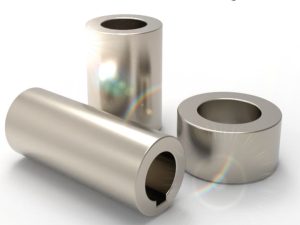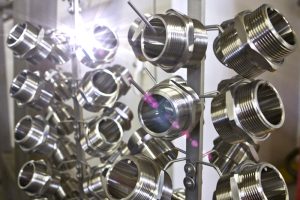![]() Certified ISO 9001:2015
Certified ISO 9001:2015


Electroless Nickel Plating
Plating
It is a chemical (auto-catalytic) plating process that deposits a layer of nickel-phosphorus or nickel-boron alloy on a substrate.
Unlike electroplating, no external electricity is used — the deposition happens through a controlled chemical reaction in a solution.
The coating is uniform in thickness, even on complex shapes, blind holes, or internal surfaces where electroplating is difficult.
Uniform Coating
Coats evenly on all surfaces, edges, and cavities.
Ideal for parts with intricate geometries.
Hardness & Wear Resistance
As-deposited hardness: ~500–600 HV
Can be heat-treated to increase hardness up to 1000 HV (comparable to hard chrome).
Corrosion Resistance
Excellent resistance, especially with high-phosphorus ENP (>10% P).
Performs better than chrome in corrosive environments like seawater.
Low Friction & Lubricity
Smooth surface reduces friction and galling.
Solderability & Conductivity
Useful in electronics (PCBs, connectors).
Low Phosphorus (2–5% P)
High hardness, wear resistance, magnetic.
Medium Phosphorus (6–9% P)
Balanced hardness + corrosion resistance (most common).
High Phosphorus (10–13% P)
Best corrosion resistance, non-magnetic, ideal for marine and chemical environments.
Uniform thickness (no “dog-boning” like electroplating).
Excellent corrosion protection.
Can coat non-conductive materials (plastics, ceramics) after proper pre-treatment.
Can be made harder than chrome after heat treatment.

